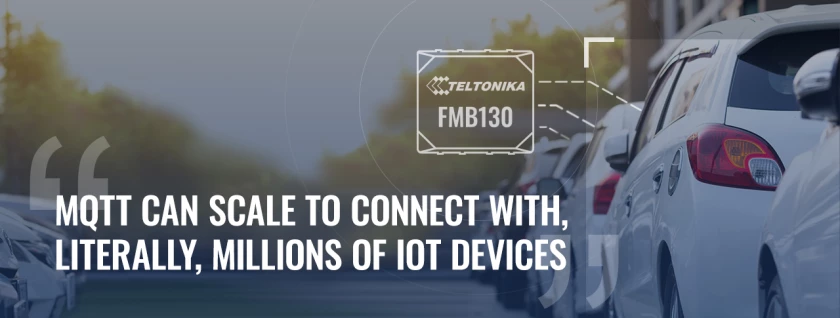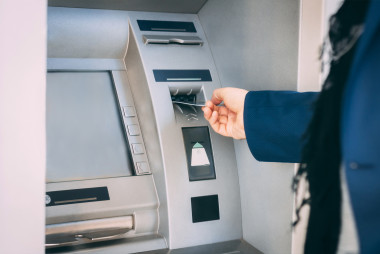INTRO
The constantly growing urban population, along with increasing popularity and the number of GPS devices, inevitably places a strain on communication networks. That causes connection reliability and coverage concerns to some extent. To help overcome the likely hurdles, Teltonika Telematics is ready to offer a problem-solving contribution.
CHALLENGE
According to the United Nations, the urban population is set to increase by almost 700 million by the year 2030, reaching a total of 5.2 billion. This represents 57% of the global population. By 2030, this figure will reach 60%.
As a result, it causes the noticeably increasing number of small, inexpensive, and lower-power objects (including Internet of Things (IoT) devices) that have appeared in the network over the past few years. Keeping in mind the United Nations findings above, the trend is clearly to stay in the near future.
That said, this situation creates network latency due to occasional bandwidth constraints, connection reliability, and coverage concerns in urban areas. Not to mention, the weather and environmental conditions are the influencing factors too, and they are beyond human control. These are the key challenges for the mobility and IoT industry, especially for large scale and important business operations – state, health system, emergency service, and military projects; luxury and pricey business class corporate car-sharing; mining, oil and gas industry, etc.
So to say, the network reliability is the key issue here that has to be addressed. Simply, because modern-day drivers are rightly expected to access vehicles to ride in a timely manner and fleet managers counting on (and paying for) the reliable data in due time, and not otherwise. Plus, the messaging protocol of choice in vehicle GPS trackers has to be encrypted and secure. Keeping all above, Teltonika Telematics is ready to offer the solution for corporate fleets and Telematics Service Providers.

SOLUTION
The difficulties can be tackled by choosing a reliable, robust, and secure protocol. That is where Message Queuing Telemetry Transport (aka MQTT or MQ Telemetry Transport) comes most useful - the messaging protocol for the IoT invented in 1999 by Dr Andy Stanford-Clark (IBM) and Arlen Nipper (Eurotech). What makes it stand out, is this - MQTT has been designed as an exceptionally lightweight messaging transport that is perfect for connecting remote devices with a small code footprint and the lowest network bandwidth. A great choice for M2M communication, so for the prominent vehicle telematics projects.
How it works - MQTT operates on the ‘client and broker’ principle and Publish/Subscribe architecture, where a client is any Internet of Thing that runs MQTT library (dedicated server, microcontroller, application, sensor, etc.) and broker is a passive go-between signpost server where data should go. It handles authentication of Things on the network as well as managing connections, sessions, and subscriptions. Clients connect to the broker, which then mediates communication between the two devices - broker and client-subscriber.
All messages have to go through the broker before they can be delivered to the subscribers. That is how IBM company describes this mechanism and its components: 'Publishers send the messages, subscribers receive the messages they are interested in, and brokers pass the messages from the publishers to the subscribers. Publishers and subscribers are MQTT clients, which only communicate with an MQTT broker.'
Based on this model, multiple clients can connect to a broker and subscribe to topics in which they are interested. Even more, MQTT is bi-directional, maintains stateful session awareness and makes it possible to significantly increase the amount of data being monitored or controlled.
MQTT and TLS. This messaging standard relies on the Internet protocol suite TCP, which does not use encrypted communication. To overcome this obstacle and encrypt the entire MQTT, any broker is allowed to use Transport Layer Security (or TLS) functionality for authentication and authorisation instead of TCP. Even more, the latter option is strongly suggested and should not be ignored. You can read more about Teltonika tracker’s security here.
How is it different - MQTT can scale to connect with, literally, millions of IoT devices - the sky is the limit here. It is lightweight and efficient, ensures reliable message delivery, connects and operates over unreliable cellular networks, and supports bi-directional communication to easily broadcast messages to groups of things. Finally, to ensure a high level of security, this standard makes it easy to encrypt messages using TLS and authenticate clients.
HOW BUSINESSES UTILISE MQTT PROTOCOL
Car dealerships and car-sharing companies track in real-time the actual vehicle location and detect the unwanted behaviour of drivers - overspeeding, harsh cornering, harsh braking, etc. If GPS trackers combined with CAN bus data adaptors (for instance, Teltonika LV-CAN200, ECAN01), it would allow monitoring of various engine readings, including accurate fuel level, odometer, engine speed (aka RPM) and so on to remarkably boost business efficiency.
Large companies, state-owned enterprises, international corporations with considerable size corporate fleets (including business class and luxury passenger cars) may use Teltonika GPS trackers with MQTT protocol to securely and timely monitor fuel consumption efficiency, prevent its drain or even thefts. Potentially, it can noticeably reduce the running costs of the fleet.
Conclusively, various types of delivery service companies, supermarkets, shopping centres, large marketplaces, and similar businesses can take advantage of GPS device benefits to track their own fleet locations and relevant data to optimise delivery routes and avoid traffic congestions, save resources and time, improve customer service, schedule maintenance of vehicles, etc.
Currently, Teltonika Telematics offers MQTT functionality with a special firmware version in FMx1 (03.27.07.Rev.520) and FMx6 (01.02.03_ID1028) series vehicle GPS trackers.
TOPOLOGY
BENEFITS
- Resolved network reliability issues - because messages are so lightweight, MQTT connects over unreliable cellular networks. It allows for messages to be stored at the broker until a device is ready to receive them.
- The ultimate choice for large scale and high-importance projects - state, health system, emergency service, and military projects; high-priced automotive and luxury fleets; business class corporate car-sharing; oil and gas industry, etc.
- Secure messaging - MQTT allows to encrypt messages using TLS functionality and authenticate clients using modern authentication protocols.
- Reduced complexity and cost-saving - the protocol allows a single connection to a message topic; data is well-structured and can be flexibly processed. Thanks to light data load and reduced bandwidth consumption, it significantly saves project cost and improves competitiveness.
- Bi-directional communication - any device can publish or subscribe to any topic handled by the MQTT broker. There is no limit on what can talk or listen to across the network, a device to the cloud and a cloud to the device.
- Message broadcasting functionality and scalability - to speed up communication, now you can broadcast messages to a group of Things, hundreds or even millions of them.
WHY TELTONIKA?
The need for fast, secure, and lightweight data transfer in GPS tracking has never been greater. Teltonika's devices use the MQTT protocol to provide uninterrupted real-time communication, ensuring a smooth flow of data between fleet management systems and IoT platforms. With optimised bandwidth efficiency and enhanced security, our solutions are tailored for industries that depend on fast and reliable monitoring, such as logistics, public transport and asset monitoring.
With decades of experience in telematics, Teltonika provides GPS tracking devices and accessories that meet the needs of modern businesses. Our solutions offer flexible integration, low power consumption, and intelligent data exchange, enabling companies to secure their fleet operations. Choosing Teltonika's telematics team means investing in the latest technology designed to keep businesses connected, agile, and ahead of the competition in a rapidly digitalising world.
Featured product
FMB130Blocking engine remotely among the numerous available fleet control measures
Reading fuel, odometer, RPM, engine temperature and more data from light & electric vehicles, trucks, buses, and special machinery
Impulse input for fuel flow meters data reading and precise fuel usage control
Bluetooth® LE-based wireless connection of external devices, including Low Energy beacons and sensors, to monitor temperature, humidity, magnet detection, and movement









